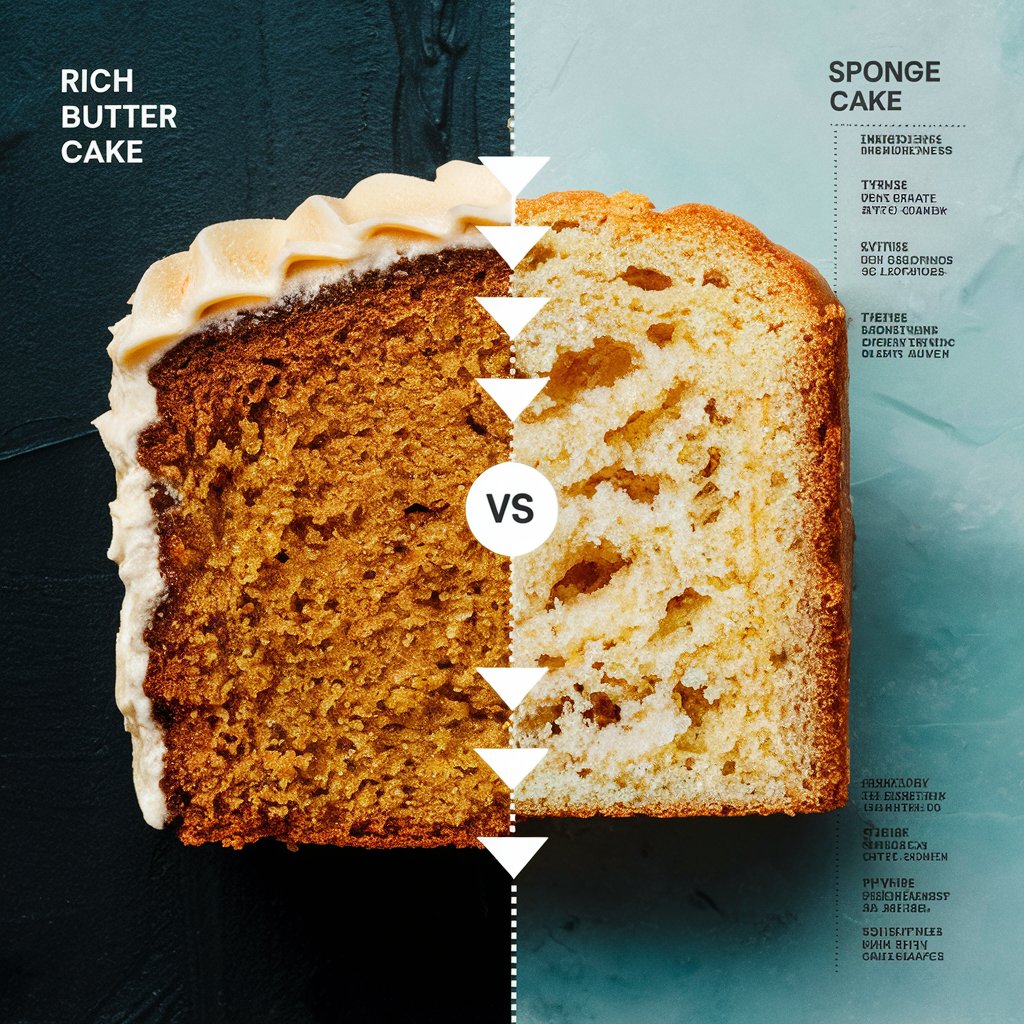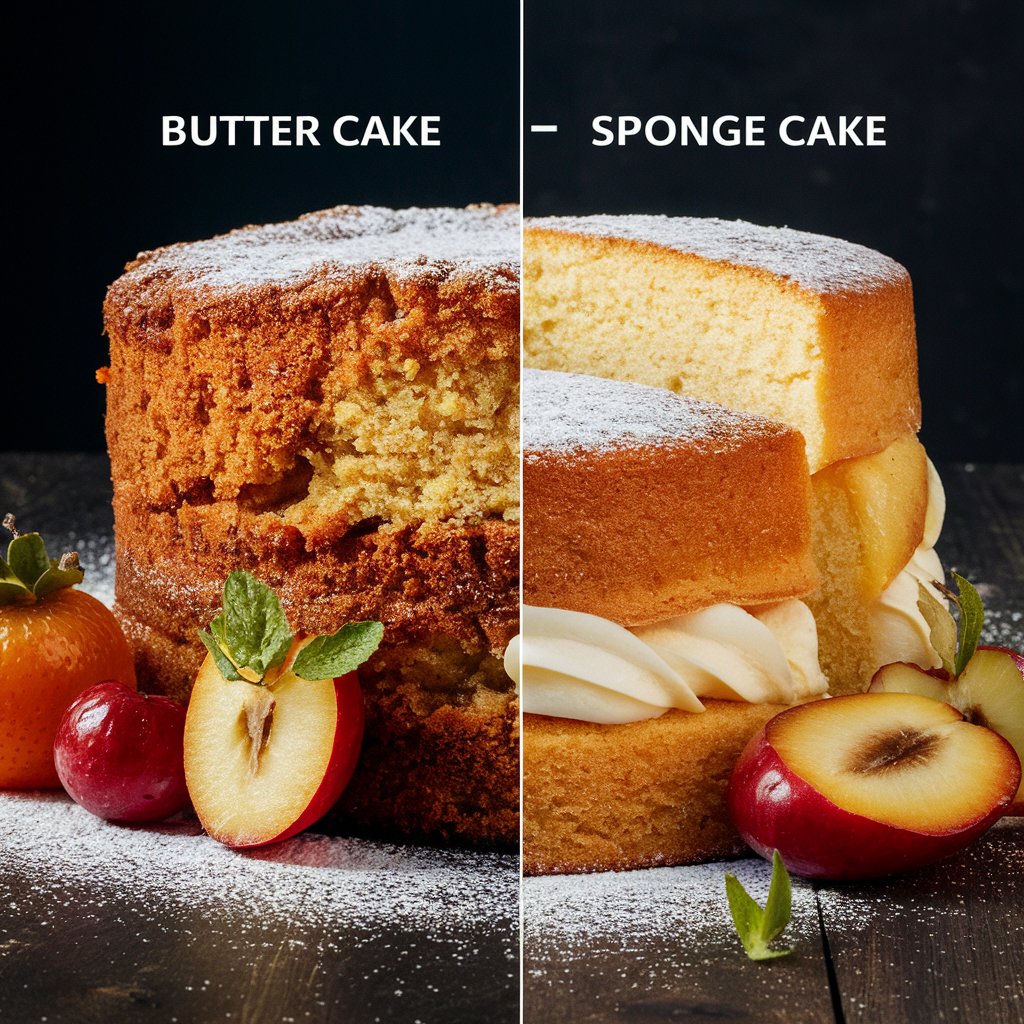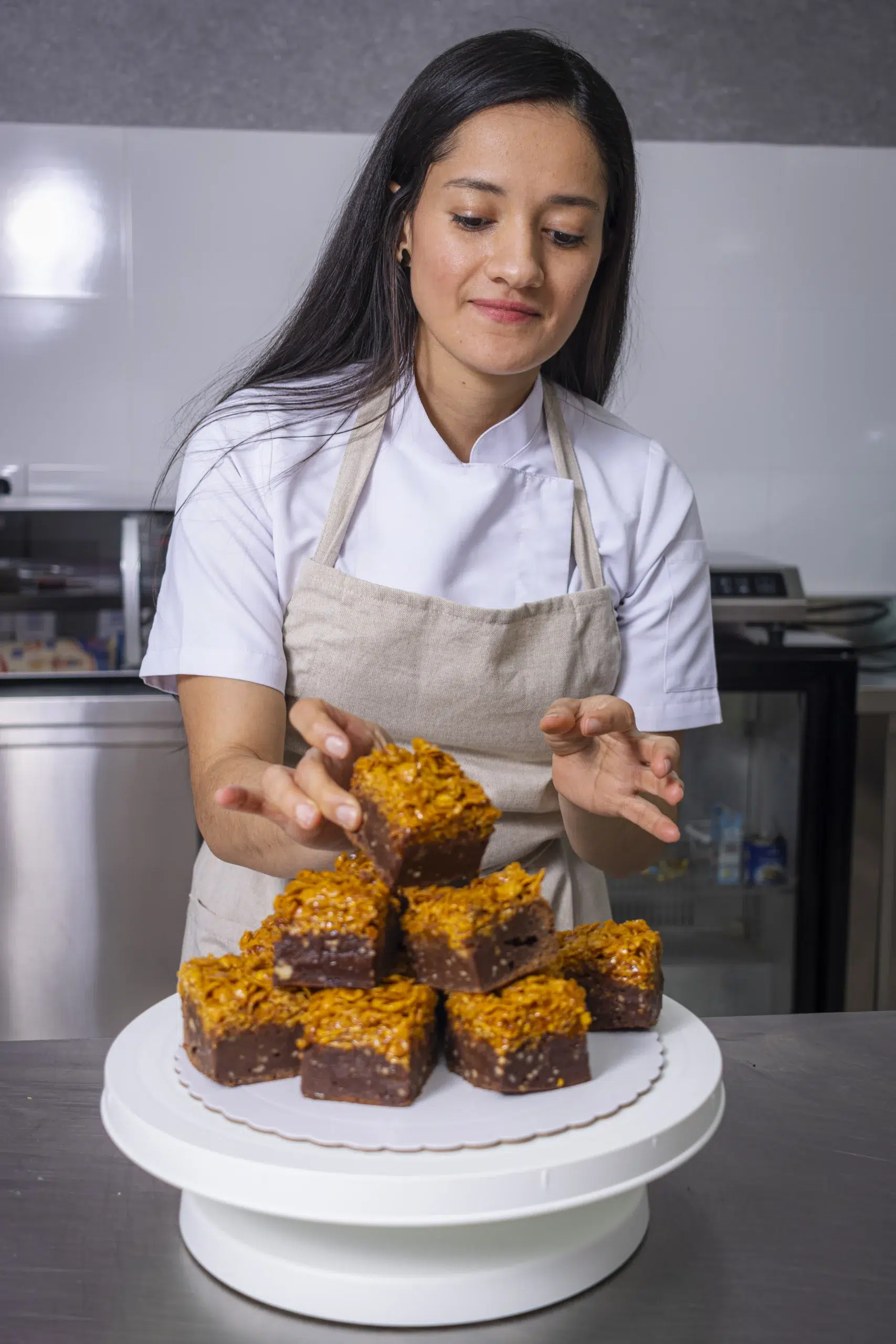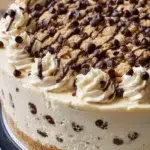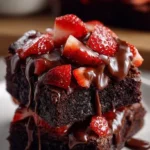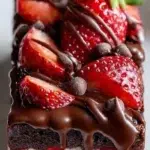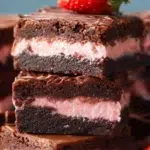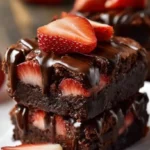Understanding the Differences Between Butter Cake and Sponge Cake
Before we delve into the delectable world of butter cake and sponge cake, let’s take a moment to appreciate the distinctiveness each brings to the dessert table. These two classic cakes offer contrasting textures, flavors, and baking techniques, making them beloved choices for bakers and dessert enthusiasts alike. In this comprehensive guide, we’ll explore the nuances of butter cake and sponge cake, uncovering their secrets from batter to bite. For more details on the composition, check out What is Butter Cake Made Of?.
Delving into Butter Cake
Butter Cake: A Rich Delight
Butter cake, a quintessential treat in many households, boasts a luxurious richness and indulgent flavor profile. Let’s dive into the heart of this delectable delight.
What Makes a Butter Cake? In essence, butter cake derives its name and essence from its key ingredient: butter. This decadent cake is characterized by its dense, moist texture and buttery flavor, which sets it apart from other varieties.
The Origins of Butter Cake The history of butter cake traces back centuries, with its roots entrenched in European baking traditions. Over time, this beloved cake has evolved, adapting to different cultures and culinary preferences.
The Key Ingredients To craft the perfect butter cake, you’ll need a few essential ingredients:
- Butter: The luminary of the ensemble, casting its golden glow of richness and unparalleled flavor, elevating every bite to a realm of culinary delight.
- Sugar: Sweetens the cake and contributes to its tender texture.
- Flour: Serves as the base, providing structure and stability.
-
Exploring the Texture of Butter Cake
Butter Cake: Dense and Moist
The texture of a butter cake is a key aspect that distinguishes it from other types of cakes. Let’s uncover the secrets behind its dense and moist crumb structure.
Dense and Moist: The Hallmarks of Butter Cake One of the defining characteristics of a butter cake is its dense yet tender texture. Unlike lighter cakes, such as sponge cake, butter cake has a satisfyingly substantial crumb that melts in your mouth with each bite.
Butter Cake’s Crumb Structure The crumb structure of a butter cake is typically tighter and more compact compared to other cakes. This denseness contributes to its rich and decadent mouthfeel, making it a favorite among cake connoisseurs.
How Butter Affects Texture The abundance of butter in butter cake plays a crucial role in its texture. The fat content in butter coats the flour particles, resulting in a tender and moist crumb. Additionally, butter adds flavor and richness to the cake, elevating its overall taste experience.
Stay tuned as we delve into the flavor profile of butter cake in the next section.
Unveiling the Flavor Profile of Butter Cake
Butter Cake: A Flavorful Indulgence
Beyond its sumptuous texture, the flavor of a butter cake is equally enticing. Let’s explore the delightful nuances that make this cake a true indulgence for the taste buds.
Butter’s Role in Flavor Development As the namesake ingredient, butter is the star player in shaping the flavor profile of butter cake. Its rich, creamy taste infuses every crumb with a luxurious butteriness that is unmatched by other cakes.
Variations in Flavorings and Extracts While butter lays the foundation for the flavor of butter cake, there are countless ways to enhance and customize its taste. From vanilla and almond extracts to citrus zest and spices, the options for flavor variations are endless, allowing bakers to experiment and create unique renditions of this classic cake.
Common Pairings and Toppings Butter cake pairs beautifully with a variety of complementary flavors and toppings. Whether topped with a luscious buttercream frosting, drizzled with caramel sauce, or adorned with fresh berries, the versatility of butter cake makes it a versatile canvas for creative culinary expression.
Stay tuned as we delve into the baking techniques for achieving the perfect butter cake in the next section.
Butter Cake vs Sponge Cake
Mastering the Baking Techniques for Butter Cake
Butter Cake: Tips for Success
Achieving the perfect butter cake requires careful attention to baking techniques. Let’s explore the methods and tips for ensuring that your butter cake turns out moist, tender, and full of flavor.
Creaming Method vs. Reverse Creaming Method Two primary methods are commonly used for mixing butter cake batter: the creaming method and the reverse creaming method.
- Creaming Method: In this traditional approach, softened butter and sugar are beaten together until light and fluffy, incorporating air into the batter.
- Reverse Creaming Method: This newer technique involves combining the dry ingredients first, followed by the addition of softened butter and liquids. The result is a more tender crumb with a tighter texture.
Proper Mixing and Baking Times Regardless of the method used, proper mixing and baking times are crucial for achieving the desired texture and flavor in butter cake. Overmixing can lead to a tough cake, while undermixing may result in uneven texture. Similarly, baking the cake for too long can cause it to dry out, so it’s essential to monitor the baking process closely.
Understanding the right techniques for creaming butter, mixing ingredients, and baking temperatures is crucial for a perfect butter cake. For specific baking tips, see Why is Butter Cake So Good?.
Considering Healthier Alternatives for Butter Cake
Butter Cake: Indulgence with Moderation
While butter cake is undeniably delicious, it’s essential to consider healthier alternatives and substitutions for those with dietary restrictions or preferences. Let’s explore some ways to enjoy the decadence of butter cake while making mindful choices for our health.
Butter Cake and Dietary Restrictions For individuals with dietary restrictions such as lactose intolerance or dairy allergies, traditional butter cake may not be suitable. However, there are plenty of dairy-free and vegan alternatives available that replicate the flavor and texture of butter cake without compromising on taste.
Moderation and Portion Control Like any indulgent treat, enjoying butter cake in moderation is key to maintaining a balanced diet. While it’s perfectly okay to indulge occasionally, it’s essential to be mindful of portion sizes and overall calorie intake.
Substitution Options for Healthier Versions For those looking to lighten up their butter cake recipe, there are several substitution options available:
- Butter: Substitute with healthier fats such as coconut oil or avocado oil.
- Sugar: Use natural sweeteners like honey or maple syrup in place of refined sugar.
- Flour: Opt for whole grain flours or gluten-free alternatives for a healthier twist.
By making thoughtful substitutions and practicing moderation, you can enjoy the decadent pleasure of butter cake while prioritizing your health and well-being.
Stay tuned as we transition to exploring the world of sponge cake in the next part.
Unraveling the Secrets of Sponge Cake
Sponge Cake: Lightness in Every Bite
As we bid farewell to the rich indulgence of butter cake, we embark on a journey into the ethereal realm of sponge cake. Renowned for its light and airy texture, sponge cake offers a delightful contrast to its buttery counterpart. Let’s uncover the secrets behind this beloved confection.
Sponge Cake: A Flavorful Indulgence Despite its light and airy texture, sponge cake is no stranger to flavor. Let’s explore the delicate nuances that make this cake a true delight for the senses.
Light as a Feather: The Texture of Sponge Cake The hallmark of a sponge cake is its spongy, airy texture, which sets it apart from denser cakes like butter cake. Each bite is light and delicate, almost melting in your mouth with every forkful.
How Sponge Cake Rises Without Leaveners Unlike traditional cakes that rely on leavening agents like baking powder or baking soda, sponge cake achieves its airy texture through the incorporation of whipped eggs. The process of beating the eggs until they are light and frothy creates a stable foam that acts as a natural leavening agent, causing the cake to rise during baking.
Achieving the Perfectly Spongy Texture While achieving the perfect texture in sponge cake may seem daunting, with the right techniques and a bit of practice, anyone can master this delicate confection. From properly whipping the eggs to gently folding in the dry ingredients, attention to detail is key to achieving a flawless sponge.
Stay tuned as we delve deeper into the flavor profile of sponge cake in the next section.
Exploring the Flavor Profile of Sponge Cake
Sponge Cake: Delicate Flavor Enhancers
While sponge cake is prized for its light and airy texture, its flavor profile is equally worthy of praise. Let’s delve into the delicate nuances that contribute to the irresistible taste of this classic confection.
Delicate Flavor Enhancers in Sponge Cake Though seemingly simple, sponge cake boasts a subtle yet sophisticated flavor profile. The delicate sweetness of the cake allows for the subtle nuances of flavorings and extracts to shine through, creating a harmonious balance of taste with every bite.
Infusions and Variations From vanilla and almond to citrus and beyond, sponge cake offers endless possibilities for flavor experimentation. Whether infused with fragrant extracts or paired with fresh fruits and jams, there’s no limit to the creative combinations that can elevate the taste of this beloved dessert.
Complementary Flavors and Pairings The lightness of sponge cake makes it the perfect canvas for a wide range of complementary flavors and toppings. Whether adorned with a simple dusting of powdered sugar, a dollop of whipped cream, or a drizzle of chocolate ganache, the versatility of sponge cake knows no bounds.
As we conclude our exploration of sponge cake, we bid farewell to this ethereal delight, armed with newfound knowledge and inspiration for our next baking adventure.
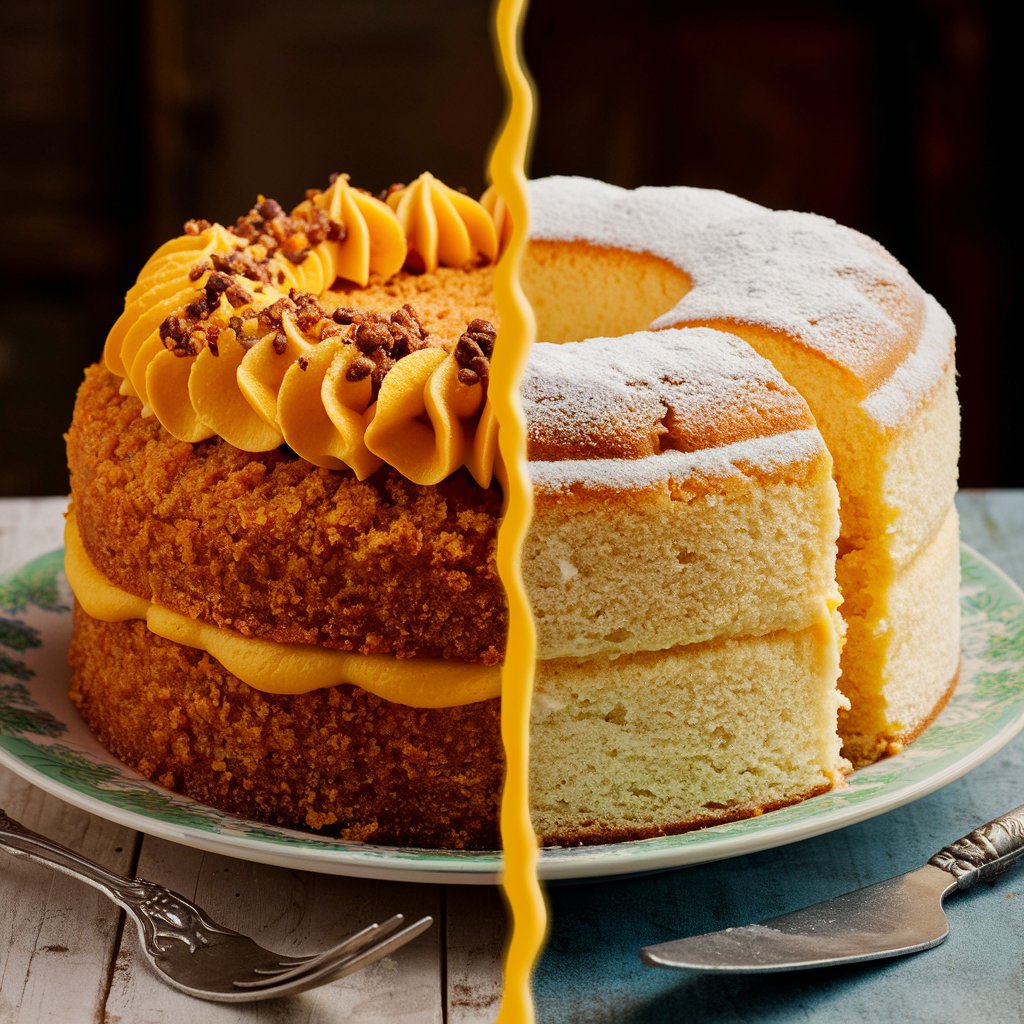
Comparing Butter Cake and Sponge Cake
Butter Cake vs. Sponge Cake: Contrasting Delights
As we’ve journeyed through the decadent world of butter cake and the ethereal realm of sponge cake, it’s time to compare and contrast these two beloved confections. Let’s delve into the differences that set butter cake and sponge cake apart, from texture to flavor and everything in between.
Texture: Dense vs. Light and Fluffy One of the most apparent differences between butter cake and sponge cake lies in their texture. While butter cake boasts a dense and moist crumb, sponge cake is characterized by its light and airy consistency.
Flavor: Rich and Buttery vs. Delicate and Subtle In terms of flavor, butter cake exudes a rich and buttery taste that lingers on the palate, thanks to its abundance of butter. In contrast, sponge cake offers a more delicate and subtle flavor profile, allowing for the subtle nuances of flavorings and extracts to shine through.
Versatility and Adaptability
When it comes to versatility, both butter cake and sponge cake offer endless possibilities for customization. However, butter cake tends to be more forgiving when it comes to flavor variations and mix-ins, while sponge cake requires a lighter touch to maintain its airy texture.
Nutrition: Indulgence vs. Moderation From a nutritional standpoint, butter cake is undoubtedly the more indulgent option, thanks to its higher fat and calorie content. On the other hand, sponge cake, with its lighter texture and lower fat content, offers a slightly healthier alternative for those watching their waistlines.
Popular Variations: Traditional vs. Innovative While both butter cake and sponge cake have their traditional iterations, they also lend themselves to a wide range of innovative variations and adaptations. Whether it’s adding mix-ins, experimenting with different flavor combinations, or exploring cultural and regional variants, the possibilities are endless for both cakes.
As we conclude our exploration of butter cake and sponge cake, it’s clear that each has its own unique charms and appeal. Whether you prefer the rich indulgence of butter cake or the light and airy delight of sponge cake, there’s no denying the joy that comes from baking and enjoying these classic confections.
FAQs About Butter Cake and Sponge Cake
Answering Your Burning Questions
As we wrap up our exploration of butter cake and sponge cake, let’s address some common questions that may arise when delving into the world of these classic confections. Butter Cake vs. Sponge Cake.
What Makes Butter Cake Different from Sponge Cake?
The primary difference lies in their texture and flavor. Butter cake is dense, moist, and rich in flavor, thanks to its high butter content, while sponge cake is light, airy, and delicate, with a subtler taste.
Can You Substitute Butter Cake for Sponge Cake in Recipes?
While both cakes have their unique characteristics, they can sometimes be used interchangeably in recipes, depending on the desired outcome. However, it’s essential to consider how the texture and flavor of each cake will affect the final result.
How Do You Achieve the Best Texture in Butter Cake and Sponge Cake?
Achieving the perfect texture requires attention to detail and proper baking techniques. For butter cake, ensure that the butter is creamed properly, and the ingredients are mixed just until combined. For sponge cake, focus on whipping the eggs to a stable foam and gently folding in the dry ingredients to avoid deflating the batter. further comparison, consider reading What is the Difference Between a Butter Cake and a Pound Cake?.
Are There Healthier Alternatives to Traditional Butter and Sponge Cakes?
Yes, there are plenty of healthier alternatives available for those looking to indulge without the guilt. For butter cake, consider using healthier fats like coconut oil or avocado oil, and for sponge cake, experiment with whole grain flours and natural sweeteners. Butter Cake vs. Sponge Cake.
What Are Some Common Mistakes to Avoid When Baking Butter Cake and Sponge Cake?
Common mistakes include overmixing the batter, baking at the wrong temperature, and not properly greasing and flouring the cake pans. Additionally, be mindful of ingredient substitutions and their impact on the final outcome.
As we conclude our journey through the world of butter cake and sponge cake, I hope these FAQs have provided clarity and insight into these classic confections. Butter Cake vs. Sponge Cake.


